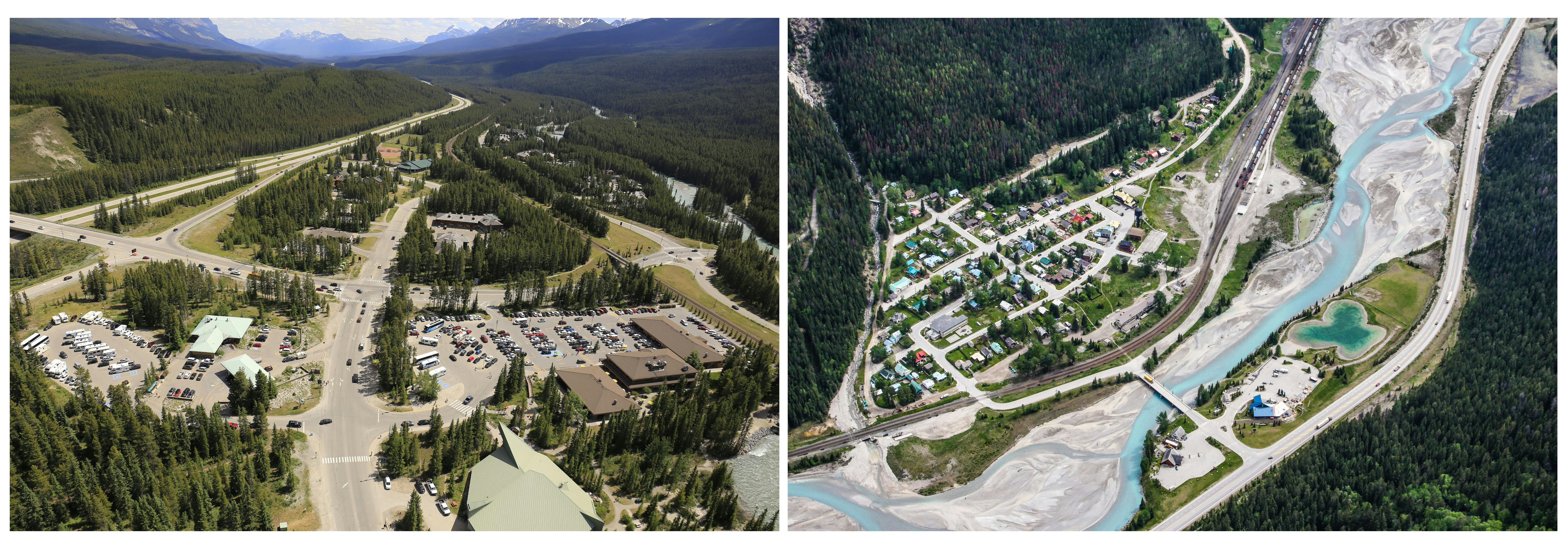FAQs
- community environmental stewardship;
- climate change;
- transportation and internal community mobility;
- infrastructure, services and amenities;
- housing types and designs; and
- managing impacts to the natural environment.
What are Community Plans?
Community plans guide the management of national park communities and are a requirement of the Canada National Parks Act. They guide the nature of development and construction projects inside the communities administered by Parks Canada such as Lake Louise, Alberta and Field, B.C.
Community plans must reflect existing limits to growth and be in alignment with the vision and strategic priorities set out in park management plans.
.
Why are these Community Plans being updated?
The Field Community Plan (2010) and Lake Louise Community Plan (2003) need to be updated to align with the most recent Yoho and Banff national park management plans (2022). Previously legislated limits to growth cannot change but the updated community plans will be modernized to incorporate new knowledge and address emerging issues.
Updated community plans will provide a framework for decision making within the legislated community boundaries of Field, B.C. and Lake Louise, Alberta for 10 years or more.
.
What can the public contribute through engagement?
Public engagement will ensure these plans are informed by the perspectives of community residents, stakeholders and interested Indigenous communities. Feedback from public engagement may inform decisions about community environmental stewardship, housing types and designs, inner-community transportation and wayfinding, accessibility, local infrastructure improvements, climate change actions, and local services and amenities.
When will public engagement take place and how can Canadians get involved?
Updating the community plans for Lake Louise, Alberta and Field, B.C. will take place over two years in 2024 and 2025.
The first phase of public engagement in 2024 will ask how Parks Canada can ensure that the communities of Lake Louise, Alberta and Field, B.C. are sustainable visitor centres that continue to welcome and orient visitors to the parks and provide comfortable living environments for people who provide park services.
It will also seek public perspectives on how best to address specific issues such as:
Public engagement will take place in-person for community residents and businesses and online for anyone with an interest in the future of the communities of Lake Louise, Alberta and Field, B.C.
The second phase of public engagement in 2025 will seek feedback on the draft updated community plans for both Field, B.C. and Lake Louise, Alberta.
Will there be changes to growth limits or to community boundaries?
National park communities have set boundaries and legislated limits to growth. All commercial and housing parcels are fully allocated in Lake Louise, Alberta and previously legislated limits to growth will not change.
How are the communities of Lake Louise and Field different from the town of Banff or municipality of Jasper?
There are seven communities located inside national parks in Canada. Five of them are administered by Parks Canada including Field, B.C. in Yoho National Park; Lake Louise, Alberta in Banff National Park; Waterton, Alberta in Waterton Lakes National Park; Waskesiu, Saskatchewan in Prince Albert National Park; and Wasagaming, Manitoba in Riding Mountain National Park.
The Town of Banff and the Municipality of Jasper are different because they are both self-governed, recognized municipalities under the Alberta Municipal Government Act. The formation agreements with Parks Canada are unique to each community.
For more information, contact Parks Canada in Banff or Jasper.
How do Community Plans relate to Park Management Plans?
National park management plans provide high-level strategic direction for a park including specific objectives for national park communities. The updated Community Plans will provide Parks Canada with guidance about how to achieve those specific objectives, while also reiterating legislated limits to growth as required by the Canada National Parks Act.
National park communities have legislated geographic boundaries. The community plan will guide decision making within these geographic boundaries, and not the national park as a whole.
How do Community Plans relate to Visitor Use Management Plans?
In addition to updating the community plans for Lake Louise, Alberta and Field, B.C. Parks Canada is also developing a Visitor Use Management Plan to adapt to increasing visitation in the Lake Louise area.
Parks Canada has used many tools to address these challenges including shuttles, reservations services, paid parking, and marketing campaigns. We’ve learned over the years and are now seeking public perspectives.
The Lake Louise Area Visitor Use Management Plan will focus on visitor access and use at Moraine Lake and Paradise Valley, the Lake Louise Lakeshore and the Lake Louise Park & Ride.
The goal of visitor use management planning is to protect the mountain ecosystems that make Lake Louise and Moraine Lake special, while ensuring high quality experiences for visitors and residents alike.
Public engagement will take place in summer 2024. Visit letstalkmountainparks.ca to learn more.
